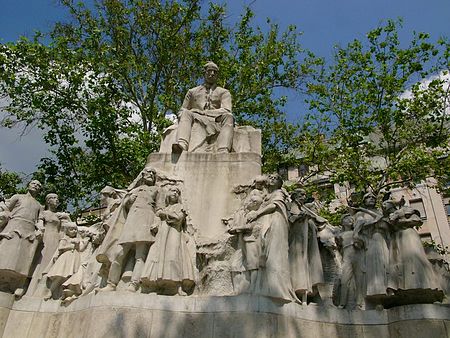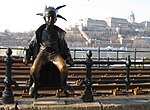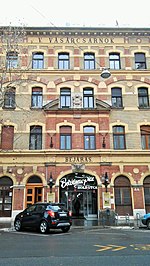Vörösmarty tér
Squares in Budapest

Vörösmarty tér or Vörösmarty square is a public square in the Budapest city centre at the northern end of Váci utca.At the centre of the square facing west is a statue by Eduard Telcs and Ede Kallós of poet Mihály Vörösmarty. Behind the monument is a fenced park and a fountain flanked by stone lions. At the north end of the square is the Café Gerbeaud and stairs to the southern terminus of the Budapest Metro's line M1. The square is also a business area, including offices for Ibusz and Aeroflot. The British Embassy is located at the square.
Excerpt from the Wikipedia article Vörösmarty tér (License: CC BY-SA 3.0, Authors, Images).Vörösmarty tér
Mühlenstraße, Kappel-Grafenhausen
Geographical coordinates (GPS) Address Nearby Places Show on map
Geographical coordinates (GPS)
| Latitude | Longitude |
|---|---|
| N 47.496594444444 ° | E 19.050666666667 ° |
Address
Mühlenstraße 1
77966 Kappel-Grafenhausen
Baden-Württemberg, Deutschland
Open on Google Maps











